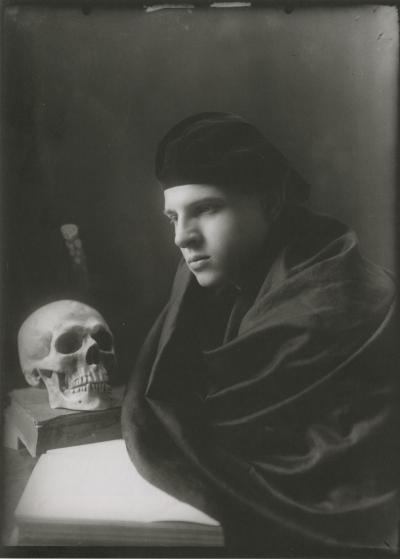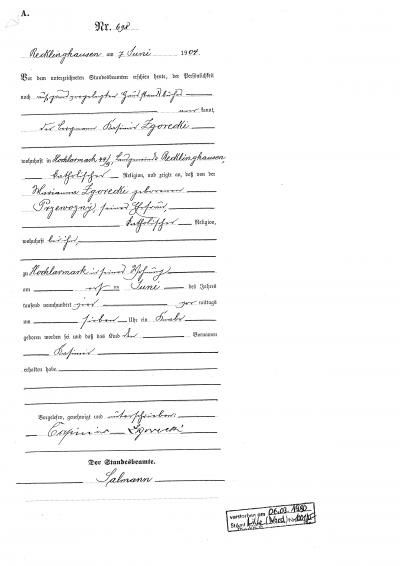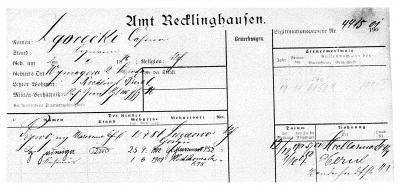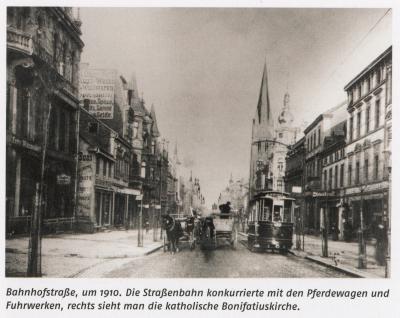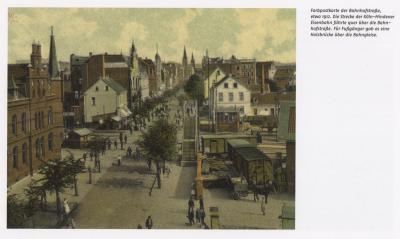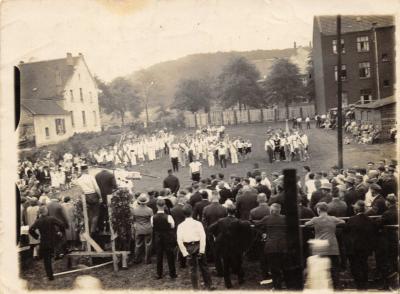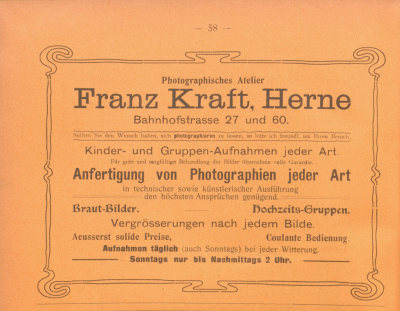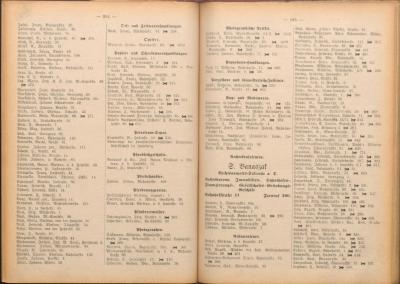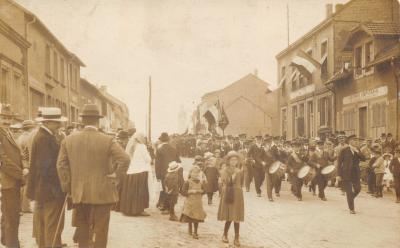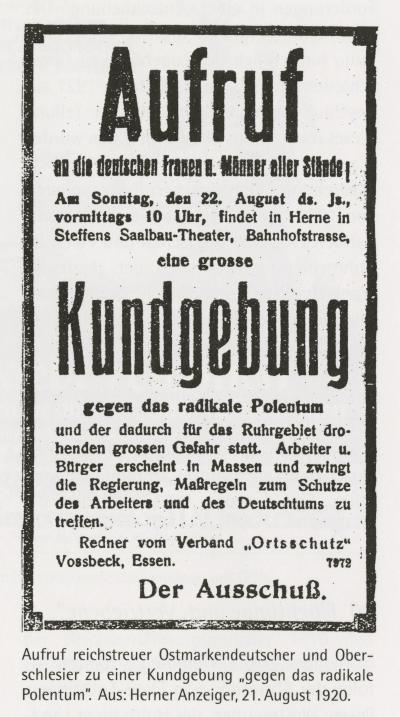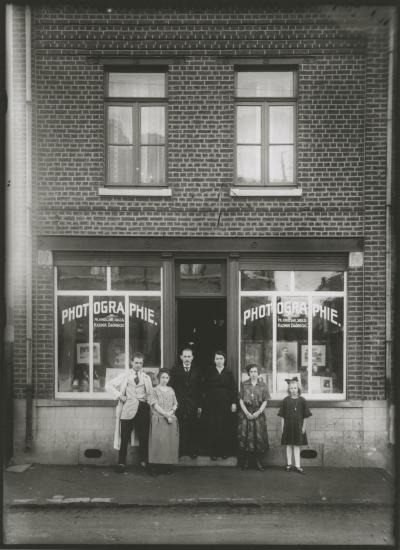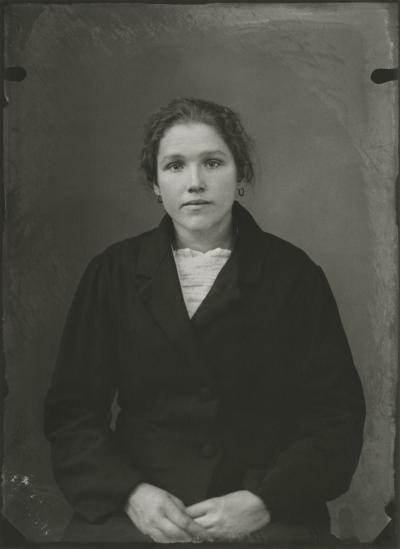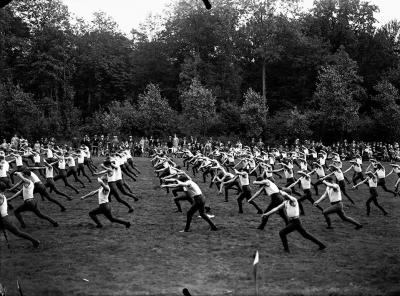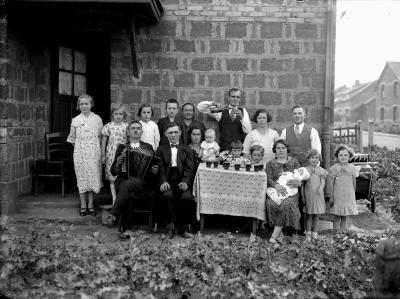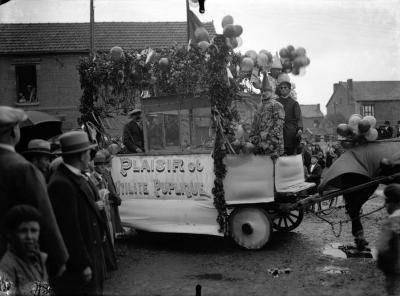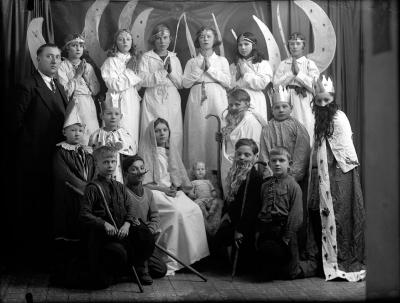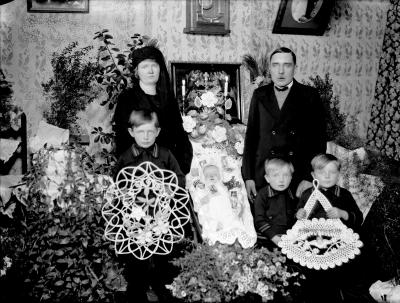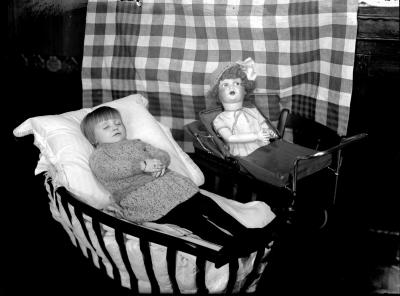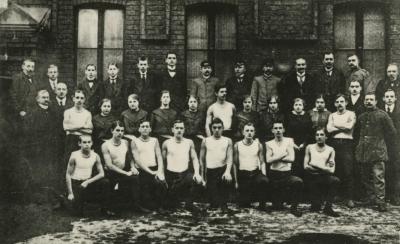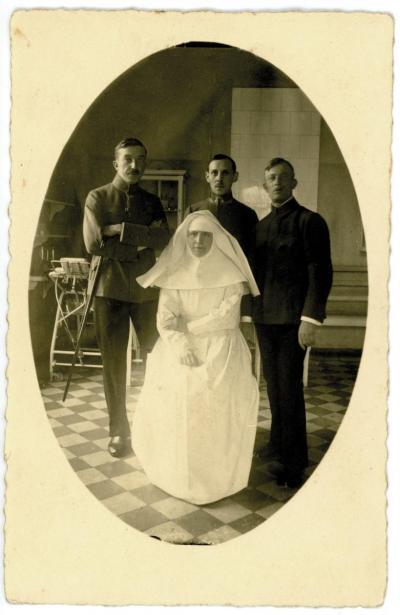Kasimir Zgorecki (1904-1980) – from Recklinghausen to the pantheon of French photography
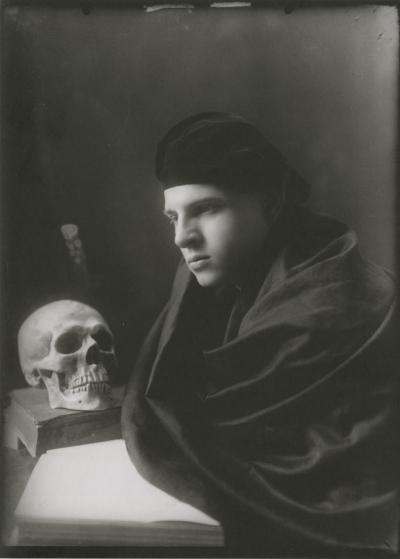
Could Kasimir Zgorecki’s initial interest in photography have developed from influences in Herne? This assumption cannot be fully confirmed by the sources available. However, it is not out of the question because the Polish newspaper “Narodowiec” was first published in Herne in 1909 within this sphere of influence.[41] The paper published articles and photos for the Polish-speaking population. Ralf Piorr also referred to the Kraft photographic studio in Bahnhofstraße (see Fig. 9). And given that the Zgorecki family did not live far from the studio, it would have been known to Kasimir. In our conversation, Piorr also mentioned that photography, in general, was ever present in the mining sector. Workers were often arranged on photos according to hierarchy, which served to underline their social status. It is highly likely that Kasimir was watching all of this; in fact, his father may well have been photographed himself.[42] There were other studios besides the Kraft photographic studio as well as shops that sold photographic articles. Ralf Piorr referred to a Herne address book of 1914 in which several shops were listed (see Fig. 10).
In 1922, when Kasimir Zgorecki had completed his training in the mine, the family decided to migrate to northern France. The restoration of the free Polish State in 1918 saw many people return to Poland from the Ruhr area. However, in Kasimir’s case this was not possible because of the requirements for repatriation which stated that only Poles who had reached the age of majority and had German nationality and a German place of residence were given this option right.[43] When this law was adopted, Kasimir and his younger sister Maria were still minors. The option right ended on 10 January 1922, a few months before Kasimir’s eighteenth birthday.[44] To return to Poland, the family would have had to split up for a while, but they decided against this. So why did they not remain in Herne?
At the beginning of the 1920s, economic problems prevailed which were to lead to a global economic crisis at the end of the 1920s. A mining crisis and the occupation of the Ruhr area by the French after the First World War resulted in a significant crisis in the mining industry and to a clear worsening of living standards.[45] The presence of the French can be seen on a postcard in the Herne City Archives which shows a street parade in a Polish quarter (see Fig. 11). Following the arrival of the French, an advertising agency was set up in Duisburg in December 1921 to poach Ruhr Poles for the mining regions of France.[46] The Ruhr Poles were also becoming increasingly unhappy as anti-Polish sentiment became ever louder. One year earlier, on 22 August 1920, there had been a demonstration in Herne by the Ostmark Germans and the Upper Silesians who had been protesting against the “radical Polishness” and demanding the expulsion of Polish agitators and Sokół members.[47] The Zgorecki family must have witnessed this unrest (see Fig. 12). It could have been just one of many reasons why they chose to move to France, which then paved the way for Kasimir’s career as a photographer.
[41] See :https://www.porta-polonica.de/de/atlas-der-erinnerungsorte/der-narodowi… (last accessed on 1 July 20)
[42] Telephone call on 19 June 2020 on the subject of the Ruhr Poles in Herne.
[43] Horst Pöttker; Harald Bader: Gescheiterte Integration, p. 21.
[44] Horst Pöttker; Harald Bader: Gescheiterte Integration, p. 21.
[45] Horst Pöttker; Harald Bader: Gescheiterte Integration, p. 23.
[46] Horst Pöttker; Harald Bader: Gescheiterte Integration, p. 23.
[47] Frank Braßel: Die polnische Hauptstadt Westfalens, p. 30f.
